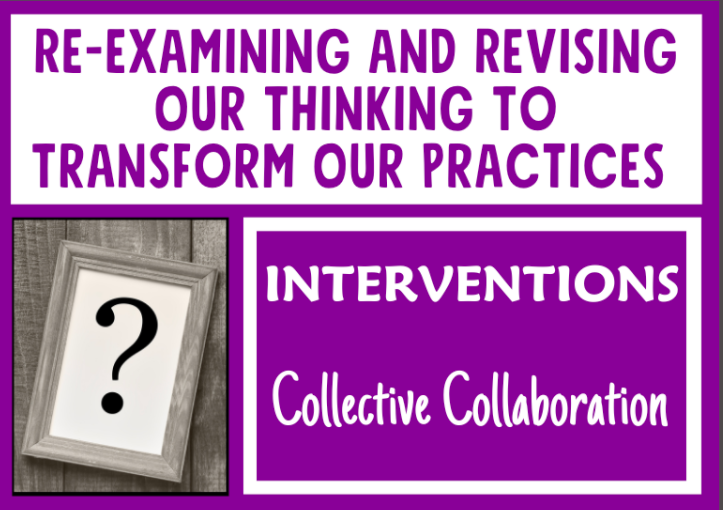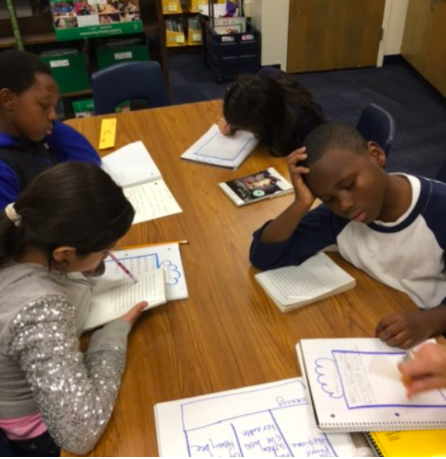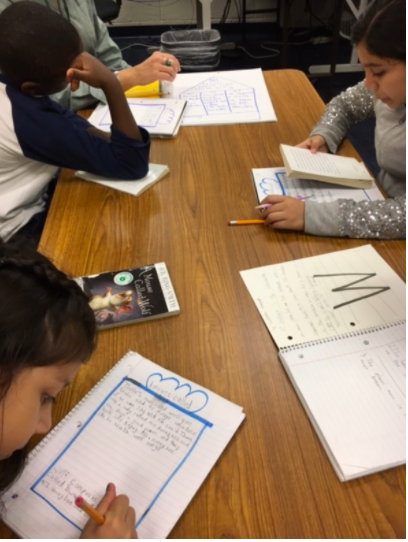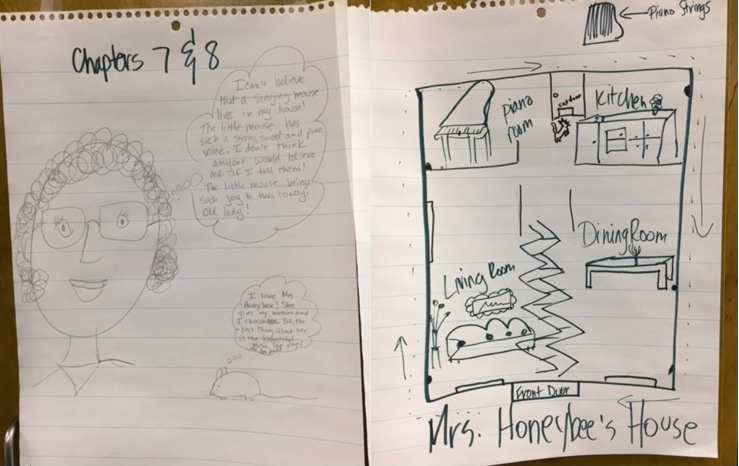
Part Four of #g2great Re-Examining and Revising Our Thinking Series was focused on intervention this week: Intervention: Collective Collaboration
As always, the discussion was lively and inspiring. When writing this post, I usually depend on the various tweets from peers who join the #g2great team. I’d like to take a departure from the typical format for this week’s blog post here. I’ll be sharing a blog post I wrote a few years ago about a staff member I worked with who is an intervention master teacher. I believe once you’ve read, you’ll agree.
Four days a week I witness first-hand the magic of learning to read. Mrs. O is an interventionist on our K-6 campus and I share office space with her in Room 18. When I’m not in a classroom working with teachers and kids, I sit at my desk and learn from the master teacher of learning to love to read.
Mrs. O is in compliance with our district model of RtI, but she also knows that it takes more to become a lover of books. More than phonics instruction. More than repeated reading of leveled texts. More than picture walks or front-loaded vocabulary, or comprehension questions.
A typical small group reading session with Mrs. O includes:
- Phonics/Word Work
- Quick re-read of a familiar text
- Introduction of a new text
- Students read independently while teacher listens
- New strategy lesson on comprehension skills
- Questions to facilitate critical thinking within/beyond/about the text
- Engaging teacher read-aloud and written response
Look familiar? It should.
Did you, however, spot the outlier? Mrs. O chooses high-interest, children’s books to read aloud to her small group of students.
Magic. Pure magic.
Here’s what the read-aloud looks like:
Mrs. O asks students to quickly recap what they’ve read to that point. Sometimes students are asked to listen for a specific event, character reaction, or an element of author’s craft before she starts the new chapter or short selection from the text. Sometimes they just listen to Mrs. O read. At the close of the read-aloud, students write. Always. With lots of support from Mrs. O (who, BTW, is writing while the students write). Everyone shares their written response.
Students in Mrs. O’s group are reading books (or hearing books read aloud) that are a direct match to the content they are learning in their Tier I instruction. So often our kids who require additional support miss out on the “meaty” bits of reading content in their whole class instruction. Not on Mrs. O’s watch.
For example, several weeks ago third grade students were engaged in an inquiry unit about the Civil Rights Movement. Mrs. O’s intervention session included a read-aloud or a leveled reader about that pivotal time in our nation’s history. There were books about Jackie Robinson and Hank Aaron, Martin Luther King and Coretta Scott King along with other great black heroes. The students asked so many questions about the civil rights movement that Mrs. O determined they needed a little more background information so they read The Drinking Gourd to understand the immense need for people in America to work together to create freedom for all its citizens.
Every day they wrote about what they’d read. I watched as the students struggled to articulate the heart of each text. Mrs. O exhorted and modeled and supported and listened. Every day they read their writing to an audience.
The mysterious allure of Mrs. O’s reading small group protocol is something that can’t be bought in a kit or mass-produced.
Mrs. O loves to read.
Maybe I should say she lives to read. She once told me that she can still remember the smell of the library she visited often as a child. She shares with me about the books she’s currently reading. She gives the absolute best impromptu book talks.
The love affair Mrs. O has with books is unmistakable. This book love wraps its arms around those burgeoning readers, drawing them into the text and, almost as important, drawing them into a supernatural binding of hearts with their beloved bibliophile of an intervention teacher.
That is true intervention. Taking a child who thinks they can’t or don’t want to read and knitting their hearts together through the shared experience of reading captivating texts is what ultimately makes a life-long reader.
A few days before our holiday break began, Mrs. O and her 3rd grade group finished reading A Mouse Called Wolf. So many miraculous things had happened to that small band of readers in a few short days. One child in the group is an ELL student who rarely shares openly in the discussions. A particular part of the story resonated with her and she and Mrs. O bantered back and forth giggling and making silly comments in reference to that event. Another student burst forth with an impromptu solo of the Beatles hit song, Help! (yet another great moment from the book.)
The laughter and the shared experience in that merry company in Mrs. O’s group as a result of their most recent read-aloud spoke volumes about their growth as readers. Small group reading instruction for our most fragile readers is absolutely critical.
But so is an inexorable love of books.
You can see that Mrs. O has perfected the combination of the art and science of intervention. She knows the specific skills needed to accurately read and come to full understand of a text, but she also knows that intervention instruction is about leading her table full of kids to love reading in their community of peers.
That’s precisely what kids need.
This was the 4th chat in our 5-part series so we hope you’ll join us this week.



